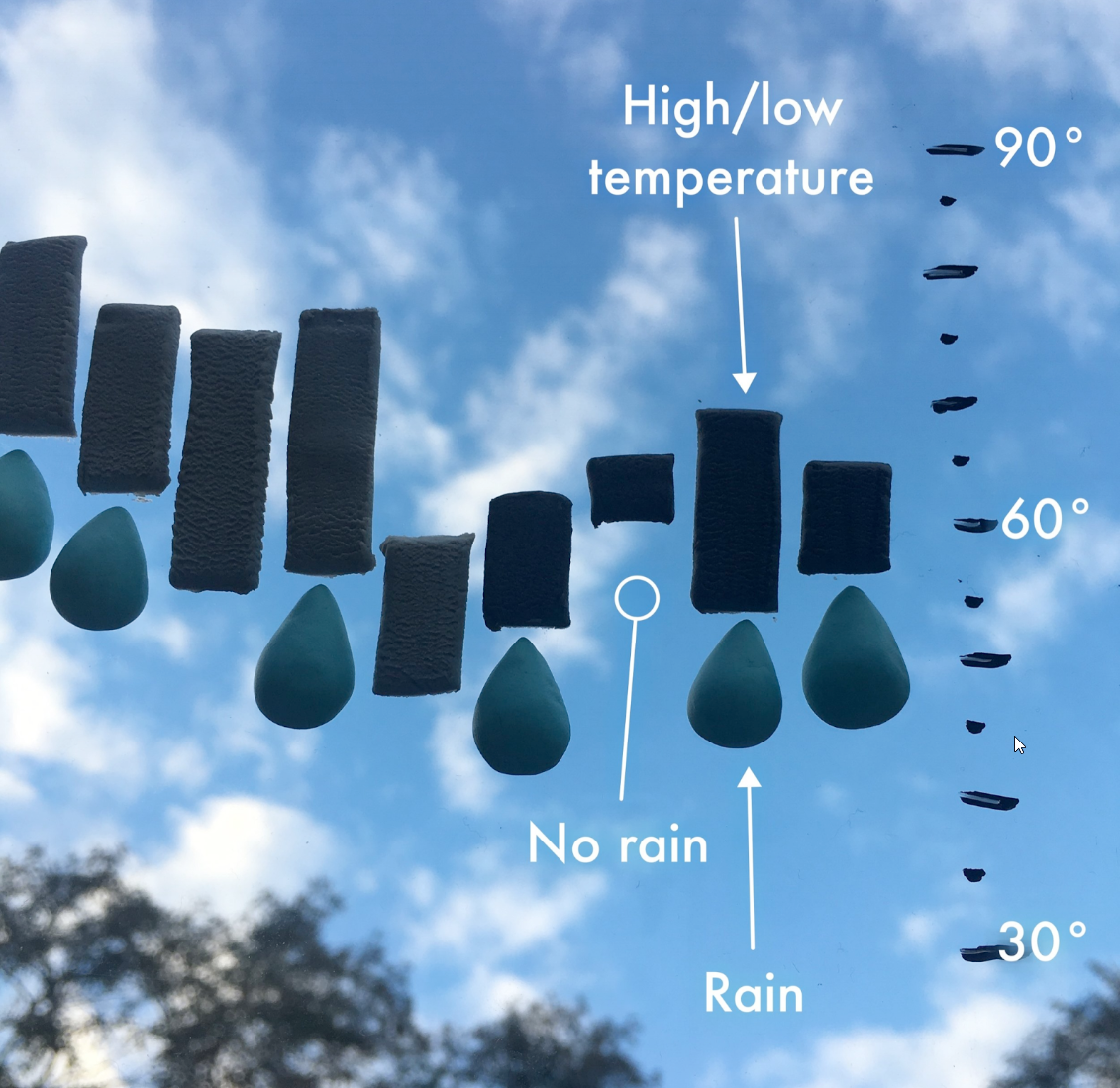Data visualizations are an excellent marketing tool with a wide range of potential uses. Visuals can be a powerful addition to a marketing campaign. They can grab the reader’s attention, break up text and help people to process the information more quickly.
A simple chart can be very effective in conveying a message with a numerical context. By placing numbers into a data visualization, you allow the reader to appreciate how one value compares to another. This might be used to highlight product features, showing how values compare to competitors or alternatives.
Consider the following message and how the inclusion of a simple visualization gives context:
“This campaign has raised $2,500 of a $2,750 target”
A data visualization can help the reader to interpret these figures and understand how close the value is to the target.
Marketers and marketing departments might use data visualizations for a wide range of different purposes:
- In advertising – to illustrate product features, particularly when quantifying the advantages of a product over the alternatives.
- In market research – to analyze and share the results of customer surveys and user feedback
- In market planning and analysis – to interpret and share marketing data including website analytics, sales funnels, social media statistics, and more.
How can marketers use data visualization to engage audiences?
Whenever a data visualization is created for the purpose of sharing, then the most important consideration is how to engage the audience. This is particularly important in marketing, where audience attention is critical to the success of a campaign.
Marketers can use data visualization for a range of purposes:
- To get the reader’s attention: Visualizations give you the opportunity to break up your text with some eye-catching graphics.
- To engage readers with additional insight: Presenting data in interesting ways can engage the user and encourage them to explore further. You can use visualizations creatively to provide a unique insight into your product, your company, or a related area of interest.
- To distill and explain complex information: Visualizations can be used to simplify complex data sets in order to explain a key message. For example, you might have a lot of technical product testing results that can be simplified into a graph that summarizes how your product compares to another.
- To prove a statement or reinforce an argument or opinion: Your claims are likely to be more convincing if they are backed up with data. This can be particularly valuable in marketing where you want your product or service to stand out from the crowd.
- To find patterns (including outliers) and to illustrate trends: Data visualizations can be a good way of exploring and sharing findings from market research and analysis activities. This information can help you to effectively target your next marketing campaign.
- Improve the decision-making process: Data visualizations can give additional insights into trends and patterns that can help with marketing decisions. For example, by plotting customer survey results on a map, you might find that preferences vary with location – this could be useful information when planning regional marketing activities.
What makes for an effective data visualization?
To be most effective, your visualization should:
- Be engaging to gain attention and engage the audience
- Deliver the message clearly and accurately
- Be accessible to the target audience
- Be attractive and consistent with any brand requirements
How to create effective marketing visualizations
Follow this step-by-step guide to create your data visualization masterpiece:
- Establish your objective: What is the key message that you want to deliver with your visualization? Try to distill this into a short, simple sentence.
- Select your data: Identify the data needed to deliver your key message and ensure your data is accurate and credible. Think about ways you might be able to simplify the data (but without compromising on the accuracy).
- Add context: Do you need to include any background information or comparative data to deliver your message? Do you need to reference any sources or explain the origins of your data?
- Format your chart: Make use of color and format options to create an eye-catching but accessible visualization. You might want to use brand colors and fonts, but you should always ensure the message remains clear.
- Remove clutter: Improve clarity by removing any superfluous features or duplicated information. Consider whether each feature of the chart is necessary. You might choose to remove gridlines, borders, or other features to improve the appearance and readability.
- Avoid data distortion: Check that the visualization is an accurate depiction of your data, avoiding distortion. Be aware that some design choices might give a false impression of data trends, and so this should be made clear to the user. For example, a non-zero baseline for the y-axis might overemphasize differences in values, giving a false impression to the reader.
- Use design best practices: Consider readability and accessibility at the heart of any design decisions, along with any brand guidelines. Be aware that visualizations may display differently on different devices. Interactive features, in particular, should be used with caution. Avoid relying on any ‘hidden’ information (such as tooltips) as a sole means of delivering the key message.
Creating marketing data visualizations with everviz
everviz includes a number of features that can help you to create highly engaging data visualization that meet accessibility requirements.
- Interactivity: everviz charts are fully interactive, allowing users to select data and view tooltips for additional information.
- Accessibility: everviz includes features to help you design accessible charts, including alternative text, annotations, and fully customizable color schemes.
- Responsive design: everviz data visualizations are responsive by default, easily adjusting to fit different screen sizes. The platform also allows you to preview how your chart will be displayed on mobile, tablet, and desktop devices.
- Branding consistency: everviz allows you to set up your own theme which means you can quickly create graphs that consistently use your preferred colors, fonts, and formats.
Types/uses of data visualization for marketers
Data visualizations to promote simple product features
Data can be used to create eye-catching charts that convey a simple idea that attracts customers.
For example, you might want to simply compare a key feature against a competing product:
Or, perhaps you are selling a design service and want to illustrate that your process is simple, yet customer-focused:
Data visualizations to promote more specialist product data
In some industries, the customer might be interested in a more in-depth data analysis and might therefore require complex or specialist charts.
It is important to remain aware of your target customer’s requirements and their ability to interpret the data. Where possible, choose a chart type that will be familiar to the audience but don’t assume that everyone will understand it. You might wish to include some additional explanation or a summary of the key message for more complex charts.
For example, marketing within the financial sector might require charts on profit/loss, growth and investment, and the stock market.
Data visualizations to display customer feedback results
In marketing, data isn’t always just used for communicating product features to potential customers.
Some of the most important information to a marketing department is data about the customers themselves, their preferences, and how they interact with your business.
Surveys are an important part of understanding your customers, but they can generate vast amounts of data that can be difficult to disseminate. Data visualizations can help you to interpret data from customer surveys, allowing you to identify patterns that will help when you are designing your next marketing campaign. Data visualizations are also useful when sharing the outcomes of customer surveys with others, both within the company and externally.
Internally, you may need to share the results of a customer survey with the management team. Perhaps you have asked customers how satisfied they are with several different aspects of your service: a stacked bar chart might be a good way of summarising this information. In the following example, it is easy to identify which areas customers are happy with and which areas need improvement:
In the following example, a donut chart and a unit chart are used to provide a visual overview of some key customer survey results.
Data visualizations to present marketing data
In addition to customer surveys, marketers often make use of other very valuable sources of data on customer behavior. These days, most companies have some sort of web presence (either a website or social media accounts), and this can generate huge amounts of data on how customers and other users are interacting with your pages.
Often, marketers are most interested in converting page views into actual product sales. Therefore, it can be useful to analyze what people do after visiting the website. For example, if large numbers of people are using the product directory to search for items but never actually buying anything, then this might indicate that they are not finding what they are looking for.
It can also be useful to analyze how new customers are reaching the website: what pages are they viewing and what links did they follow? This might give information on how many new customers are acquired as a direct result of a social media campaign, for example.
In order to understand and share website user data, it can be useful to create data visualizations. For example, you might show the customer journeys through the website using a Sankey diagram, or you might use a funnel chart to show the proportion of leads that are turned into sales.
Maps can also be a useful tool in marketing. If your data has a location component, plotting this on a map can reveal additional patterns such as regional variations in customer behaviors. In this example, a map has been used to show the number of unique website visitors based in different countries.
Summary
- Data visualizations are a hugely useful tool for marketers. They have a wide range of potential uses, both for internal analysis and external promotions.
- It is important to ensure you create the right graph to suit your target audience. Keeping things simple is usually the most effective approach.
- Always ensure your key message is clear, bearing in mind that different people may have different levels of understanding and differing accessibility needs.
everviz is packed with features that can help you achieve these goals, making it easy to create interactive data visualizations that are brand compliant and fully accessible.


